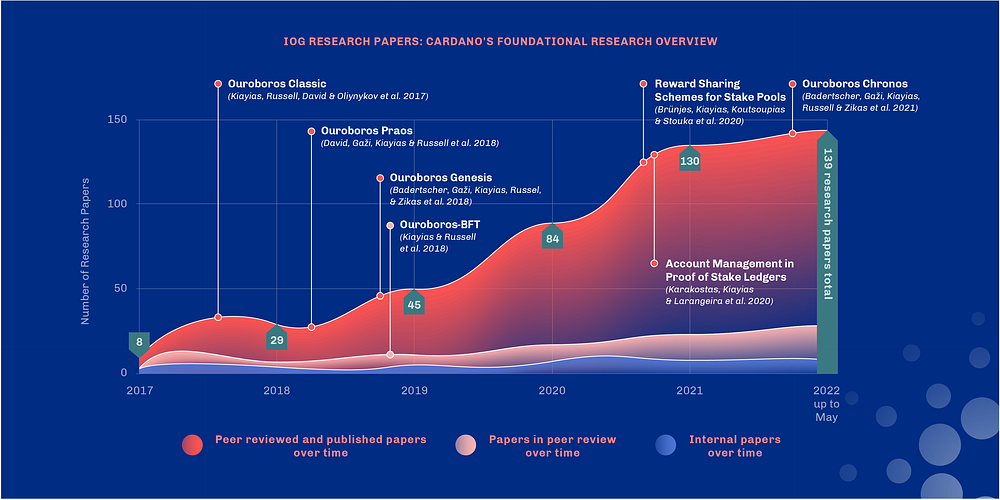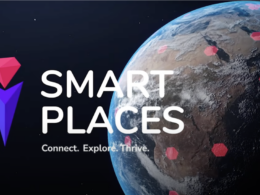In the fast-paced world of cryptocurrencies and blockchain technology, Cardano stands out for its methodical, scientific approach. While many other blockchain projects emphasize rapid prototyping and release schedules, Cardano has committed to a “scientific philosophy” underpinned by academic peer review. This rigorous process sets Cardano apart and instills confidence in its design for those looking for a thoughtful, evidence-based blockchain infrastructure.
Cardano was founded in 2015 by Ethereum co-founder Charles Hoskinson and built by engineering firm Input Output Hong Kong (IOHK). The protocol’s developers saw an opportunity to correct issues with scalability, interoperability, and sustainability that were cropping up in earlier blockchains. Their solution was to adopt a research-first approach.
Following scientific methods, Cardano’s founders laid out a set of principles and engineering requirements for the blockchain. They then leveraged peer review among mathematicians and computer scientists to turn those goals into reality. This has allowed Cardano to become one of the largest and most advanced blockchains in the world, providing a smart contract platform, native cryptocurrency, and technological foundation for countless real-world applications.
In this article, we will explore how Cardano’s commitment to rigorous peer review has enabled it to follow the scientific method in blockchain design. Far from slowing it down, this philosophical approach has allowed Cardano to build a secure, flexible, and forward-looking protocol. We will examine how peer review supports every stage of Cardano’s development, produces high-quality code, and collaborates across disciplines to meet a complex set of engineering needs. Ultimately, we will see how science and research are in Cardano’s DNA.
The Role of Peer Review
Peer review is the evaluation of work by experts in a relevant field. It is the foundation of quality research outcomes across academia and technical fields. By leveraging peer review, Cardano incorporates accountability and errors-checking into its blockchain design.
For Cardano, peer review starts with its core protocol development team, IOHK. IOHK maintains a large internal peer review group including senior engineers, programmers, and academics. All code and improvements to the Cardano protocol go through multiple stages of peer review before deployment.
Beyond internal vetting, IOHK frequently collaborates with external academics and university partners. Research papers detailing planned updates to Cardano are published and subjected to expert peer review. This includes security audits of Cardano’s core components like the Ouroboros proof-of-stake consensus mechanism. Formal verification methods are used to mathematically prove security properties.
Some examples of academically peer reviewed papers that have supported Cardano development cover sidechains, voting mechanisms, stability analyses, and more. Top conferences and journals provide venues for disseminating and critiquing novel blockchain research.
By leveraging peer review throughout the design process, Cardano enjoys higher confidence in the correctness of its code. Errors and vulnerabilities are more likely to be spotted before launch. The high scientific standards produce a robust, durable blockchain capable of underpinning mission-critical enterprise and government adoption.

Following the Scientific Method
Cardano’s adherence to peer review reflects its broader mission to follow the scientific method in blockchain design. The scientific method consists of systematic processes for acquiring knowledge through observable evidence.
Like any scientific endeavor, Cardano’s developers first formulated hypotheses about blockchain construction. This included identifying issues with predecessors like Bitcoin and Ethereum. Their hypothesis was that a peer-reviewed, evidence-driven approach could produce superior performance on scalability, interoperability, and sustainability.
With an initial set of principles and design goals established, experimentation began. The Ouroboros proof-of-stake algorithm went through multiple iterations and tests before arriving at its current form. Cardano’s smart contract platform required extensive prototyping and data gathering before the Plutus language and execution model were finalized.
At each stage, results are analyzed and used to refine the protocol. Software improvements go through exhaustive testing and benchmarking. Cryptographic proofs are re-verified mathematically after any significant alterations. This empirical, metrics-focused process aligns with the scientific method’s emphasis on measurement, analysis, and revision.
Ultimately this scientific philosophy leads to a meticulously engineered blockchain capable of living up to its original requirements. The genesis block thus represents not a first draft, but rather the product of years of peer feedback and rigorous validation.
An Interdisciplinary Approach
Cardano recognizes that realizing its scientific vision requires expertise from diverse domains. This has led IOHK to assemble a large team of computer scientists, mathematicians, and engineers from around the globe.
Cryptographers work side-by-side with software programmers to implement novel protocols. Software engineers collaborate with theoretical computer scientists to enhance the Plutus platform. Researchers in programming languages and formal verification ensure smart contracts execute properly.
Bringing together multiple disciplines fosters innovation and strengthens overall quality through review across subject matter boundaries. Findings from one field can validate or invalidate assumptions in another. The diversity of academic backgrounds also facilitates peer review.
Notable team members include CEO Charles Hoskinson, a mathematician and cryptocurrency pioneer. Professor Aggelos Kiayias helped create Ouroboros and heads IOHK’s cryptography research. Dr. Lars Brünjes is an expert in Haskell and functional programming languages. Rosario Puglisi is a world-class engineer who has led performance optimizations.
This “global brain”, as Hoskinson terms it, has allowed Cardano development to proceed along parallel tracks. Specialized experts tackle each component while regular peer review integrates their contributions into a cohesive whole. The result is a thoughtfully constructed blockchain founded on science.
Real-World Applications
A scientific approach is valuable only if it translates to usable products for the real world. For Cardano, its rigorously tested peer-reviewed protocols are now being deployed in a variety of practical domains.
On the core protocol side, Cardano has scaled to over 1 million staking wallets and processes hundreds of thousands of transactions daily, making it one of the most actively used blockchains globally.
In the decentralized finance (DeFi) space, platforms built on Cardano such as Liqwid, AADA, and Indigo offer lending, options trading, and other services to rivals like Ethereum. Cardano’s Plutus smart contract platform enables this next-generation financial infrastructure.
Cardano is even being evaluated by governments, including a cohort of Ethiopia’s Ministry of Education exploring blockchain’s impact on national operations and infrastructure. Such serious institutional adoption relies on the accountability of peer review.
In all these verticals, Cardano’s scientific philosophy matters. Stability, security, scalability underpin every deployment. By taking the time to build peer-reviewed foundations, Cardano’s blockchain is capable of serving as critical infrastructure worldwide.
Conclusion
Cardano stands apart as a blockchain protocol developed with the rigor and review of formal science. Through an extensive peer review process, Cardano has leveraged the feedback of academics and experts across computing domains. This scientific philosophy promotes accountability, error-checking, and adherence to principles of good blockchain design.
From its initial hypotheses to its working real-world applications, Cardano exemplifies the virtues of thoughtful engineering grounded in evidence. Each layer of its network, from Ouroboros’ proof-of-stake consensus to the Plutus smart contract platform, has undergone scrutiny and formal verification. An interdisciplinary team reviews and validates code at every step.
This methodical approach has allowed Cardano to become a leading blockchain in terms of technological capabilities as well as principles. As blockchain adapts to serve ever more critical functions, Cardano’s scientific foundations provide assurance. With peer review baked into its DNA, Cardano offers the transparency, security, and innovation needed to meet exacting demands. The genesis block was just the beginning — with diligence and science, Cardano continues its measured march to the future.










